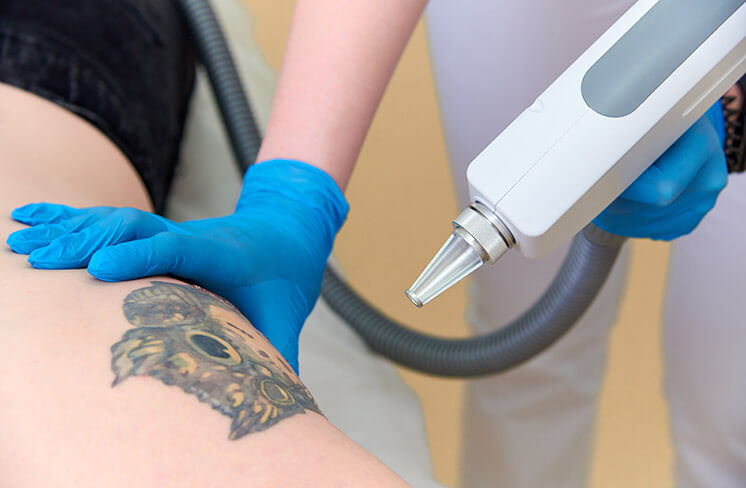In today’s society, tattoos are more common than ever, with nearly one-third of Americans having at least one. However, it’s not uncommon for people to regret their tattoos over time. Whether it’s due to career implications, personal reasons, or simply because the tattoo has faded, many seek tattoo removal. Laser tattoo removal is the most common method used to eliminate unwanted tattoos, though other techniques like dermabrasion and chemical peels are also available.
Factors Affecting Tattoo Removal
Tattoo removal can be challenging, and several factors influence the process:
- Skin Tone: Darker skin, especially with white ink, can be more difficult to treat.
- Tattoo Size and Colors: Larger and multi-colored tattoos are harder to remove.
- Skin Conditions: Eczema or other skin conditions can complicate the process.
- Tattoo Age: Older tattoos are generally easier to remove than recent ones.
- Tattoo Quality: Tattoos done by skilled artists, using high-quality ink, are more challenging to remove.
- Location: Tattoos on areas like the foot, ankle, hand, or wrist are harder to remove due to reduced circulation.
These factors can impact both the cost and duration of the removal process.
How Long Does an Appointment Take?
Appointment lengths vary based on the tattoo’s size and color, typically lasting between 5 to 10 minutes. Larger tattoos may require longer sessions. During the appointment:
- Eye Protection: You will wear protective eyewear.
- Skin Testing: Your skin will be tested to determine the appropriate laser intensity, especially for darker skin tones. Special lasers are used to minimize skin lightening.
- Treatment Process: A handpiece is placed on the tattoo, and the laser breaks down the ink. Darker ink tends to break down faster.
- Post-Treatment Care: After treatment, the area should be bandaged for two days, and antibiotic ointment may be applied. Avoid scrubbing the area and use sunscreen when outdoors.

How Many Sessions Are Needed?
Laser tattoo removal requires multiple sessions, spaced six to eight weeks apart. Most tattoos need between 6 and 12 sessions, but larger or more complex tattoos may require more time—sometimes up to a year. While complete removal is possible, some tattoos may not fully disappear. Additional treatments like dermabrasion can help further fade the tattoo.
If you plan to cover the area with a new tattoo, you may need fewer sessions. It’s essential to discuss with your tattoo artist how faded the old tattoo needs to be for optimal results. Wait at least three months after the final treatment before re-inking the area.
Pain and Discomfort
Laser tattoo removal is often compared to getting a tattoo in terms of pain. Some describe it as feeling like a rubber band snapping against the skin. While most people don’t require anesthesia, local anesthetics can be used if needed.
After treatment, your skin may be sore. Avoid scrubbing, tight clothing, and direct sun exposure without sunscreen for at least two weeks. Temporary skin discoloration is common, though it usually resolves on its own. In rare cases, it may become permanent. Scarring is possible but less likely with proper post-care.
Cost of Tattoo Removal
Each session typically costs between $200 and $500. Insurance does not cover these costs, but payment plans or medical loans may be available. The number of sessions needed can be estimated during an initial consultation. Larger and multi-colored tattoos generally require more sessions and are more expensive to remove.
Conclusion
Tattoo removal is a viable option for those who regret their ink. Modern laser techniques are safer and more effective than past methods, though it’s still important to consider the permanence of tattoos before getting one. Schedule a consultation to discuss your options and create a personalized treatment plan. With the right approach, many tattoos can be significantly faded or removed altogether.







